
Beetles aren’t the first insect you would probably consider when it comes to a full-blown infestation of your home.
Likely, it’s cockroaches, fleas, or maybe even flies. But beetles might surprise you in their capacity to move in and completely take over.
Seeing a beetle isn’t necessarily a good reason to start panicking, at least not yet.
However, if you’ve spotted it in your home, it does warrant a little more investigation, just to see where the little guy came and whether he is lost or a part of a much larger family taking up residence.
Beetles are capable of causing serious problems in terms of an infestation, but what kind of beetles are we talking about and how bad can they get?
Be patient and hang with us as we walk you through everything you need to know and everything you need to do when the beetles come knocking.
- What types of beetles prefer your comfortable home
- Signs of a beetle infestation
- What do their eggs and larvae look like
- Where do they lay their eggs
- Why do they come inside
- How to get rid of them
What Types of Beetles Can Infest Your Home?
If you can’t always agree on what kind of beetle is trying to take up residence in your home, one thing you can agree on, is they tend to have cool names.
- The Biscuit Beetle
- The American Spider Beetle
- The Deathwatch Beetle
- The Carpet Beetle
- The Common Furniture Beetle
Okay, so maybe not every beetle comes with a cool name, but these beetles are amongst the most notorious for invading homes and causing what you would consider being an infestation.
Biscuit beetles look nothing like a biscuit. In fact, they are either red or brown—or a mixture of the two—and shaped like a small pill.
In terms of size, they are very small; usually between 4mm and 5mm in length and half of that in width.
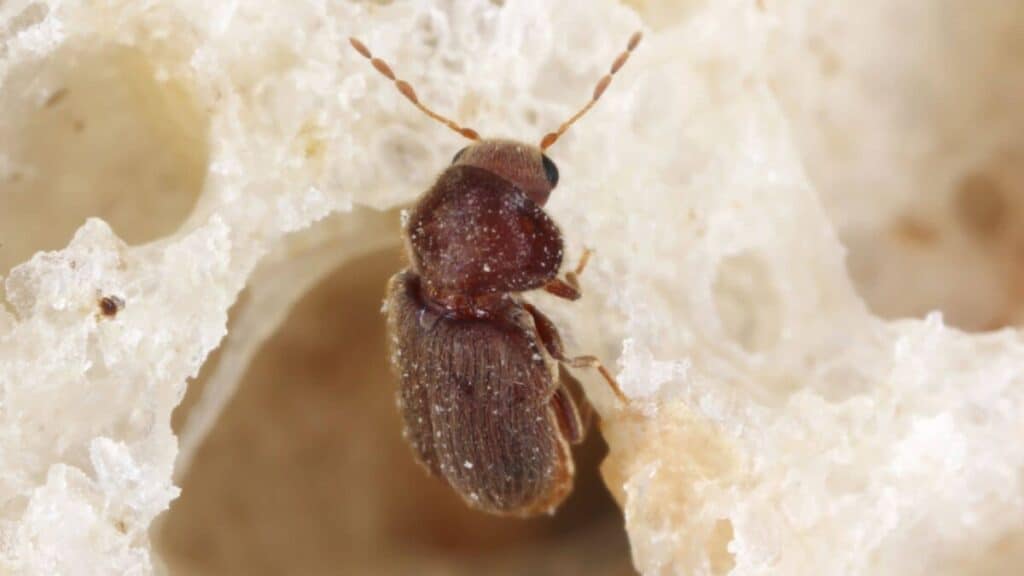
They love bread of almost any kind, especially biscuits, which is where they inherited their name.
They also love the dark, especially areas within the cupboard, where they are warm and safe, with access to their favorite dried goods.
The American Spider Beetle is even smaller than the biscuit beetle and is often mistaken for mites or even ticks.
There is nothing truly spidery about them and they certainly are not arachnids. They are black-bodied insects with a dull, glossy appearance.

They especially stand out because their legs are red or orange, as well as their heads.
The Deathwatch Beetle sounds like something straight out of a horror movie. In reality, it prefers wooden Burroughs where it can hide and breed. It also emits a strange clicking sound when it’s ready to mate.
It is a brown-colored beetle that often goes about with a slight sheen in the sunlight when it allows itself to be exposed, that is.
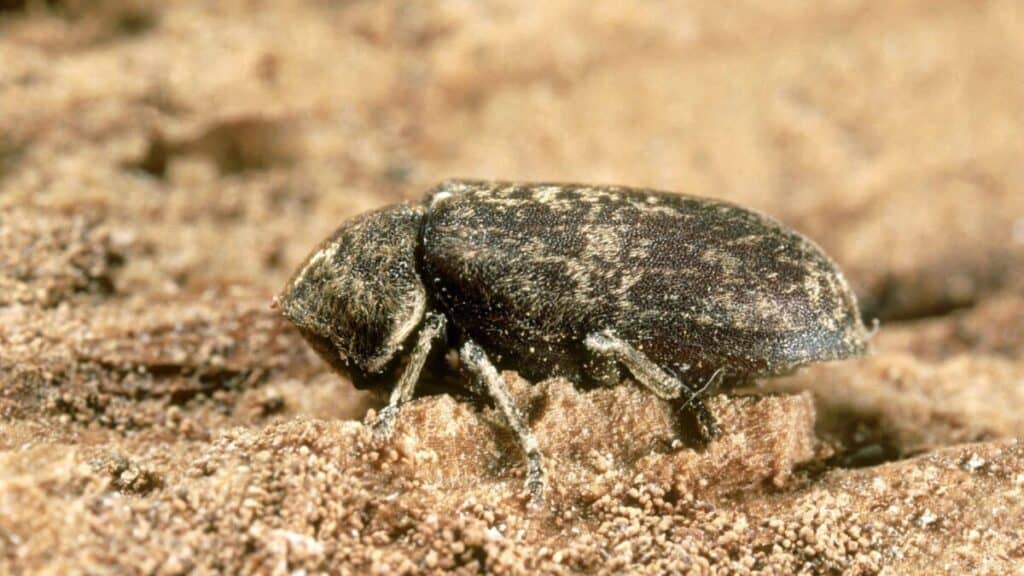
They also pull a roly-poly move whenever they fear danger. While they don’t quite roll up, they pull their legs in and pretend to be deceased.
You can probably guess where Carpet Beetles received their name and you would be largely correct. They certainly enjoy laying their eggs on the carpet, to the tune of about 75 or 100 at a time.
These are usually black or brown and are far easier to discover on lighter-colored carpets.
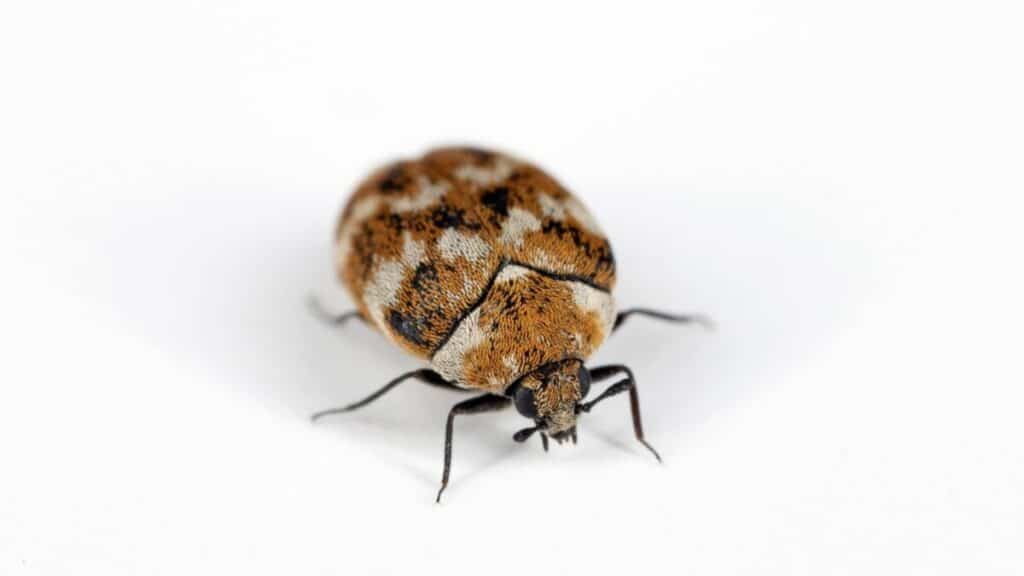
The Common Furniture Beetle rounds out the list and they don’t care too much about whether you have “common” furniture or “lavish” furniture, so long as it’s made of wood and they can burrow in deep.
They resemble the Biscuit Beetle in every aspect, with the lone exception of their “Monks Cowl” which is the only striking contrast between the two.
What are the Signs of a Beetle Infestation?
Carpet beetles are the most common beetle when it comes to a full-blown, out-of-control infestation. This is partly because they are so small and partly because they lay so many eggs at a time.
If you have darker carpets, then it’s even more difficult to discover them.
Since they feed on your carpet, especially the larvae, you may not discover them at all until you start to see tiny, missing patches on your carpet.
The adult carpet beetle isn’t big on carpet consumption, however, their babies sure are.
Your carpet is their primary if not entire diet. As far as the other beetles are concerned, be on the lookout for tiny piles of dust, especially around your furniture, in and around your cabinet spaces, underneath the sinks, and generally anywhere that you have wood.

Other beetles will also burrow, but less so, and spend much of their time hanging out in the cracks and crevices of your pantry and cabinet spaces, predominately around sources of dried goods.
The first thing you are like to notice is holes in the bottom corners of cereal boxes, pasta, rice, and holes in bags of bread, bagels, or other bagged dried food sources.
A little soft plastic isn’t going to stop a hungry beetle, after all.
What Do Their Eggs and Larvae Look Like?
Odds are, you won’t be able to see their eggs and larvae, which is one reason to be very nervous if you suspect an infestation or, at the very least, a burgeoning one.
Most beetle eggs, especially the ones that infest homes, are very tiny and white or off-white.
A beetle egg measures roughly ¼ mm to ½ mm in size, which is pretty small.
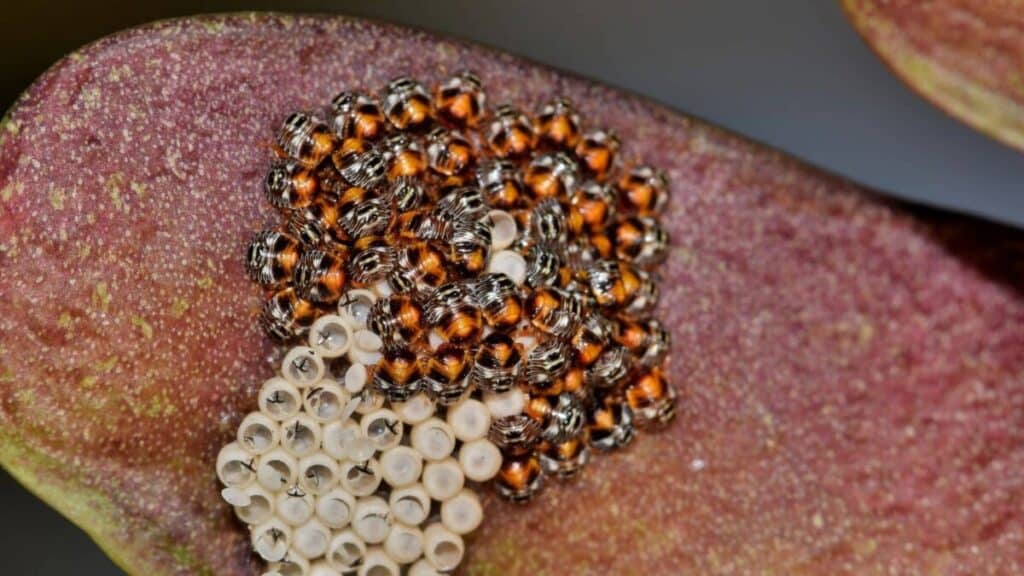
The worst part is the female can lay eggs in three different spaces in a relatively short amount of time, with the number of eggs anywhere between 50 and 100 for each space.
The eggs hatch in a hurry too; usually within 5 or 6 days after the female lays them. The females will lay their eggs in dark areas or within the depths of your carpet, almost always well outside of heavily-trafficked areas.
Other beetles lay their eggs in dark recesses or in the holes they burrow into within your furniture and cabinet spaces.
Why do Beetles Come Into Your Home?
Beetles will enter your home for many of the same reasons that any other insects come into your home. When they find a suitable environment that either provides or has the strong potential of providing a haven, food, water, and shelter from the elements, they won’t hesitate.
This is especially true when your home is ripe for invasion, with gaps in your window seals, cracks in the walls or right at the bottom, where the exterior wall meets the foundation, decaying gaps around discharge pipes, and doors that are no longer completely sealed.
Once they discover carpet, wood, or dark and inviting areas with sources of water and dried goods, their real estate agent throws up the “Sold” sign and they start moving in.
How to Stop an Infestation and Get Rid of Beetles
To handle it yourself, if you have the time and inclination, it has to start with working your way in from the outside.
- Inspect your home’s exterior
- Inspect the interior of your home, along the perimeter
- Thoroughly clean your home
- Thoroughly clean cabinet spaces, sink spaces, and any dark recesses in the home
- Break out the vacuum and steam cleaner
- Seal your windows and doors
You’ll want to inspect the entire exterior of your home, focusing on ingress points, such as windows and doors.
Bring along a caulk gun with caulk or silicone and seal every gap that you find. Redo your window seals and door seals, which will protect you from the environment as well as keep out the beetles.
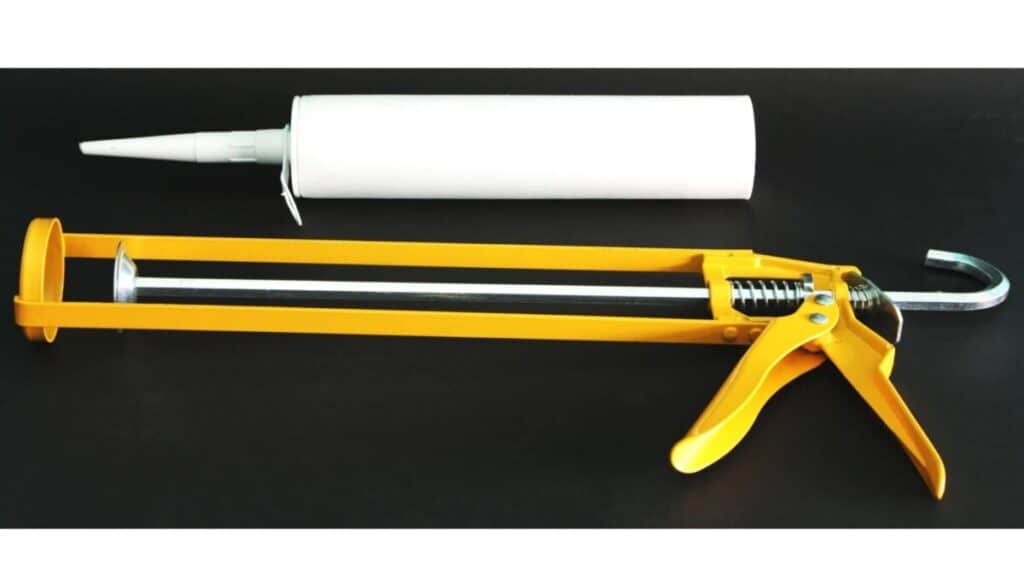
Ensure that your windows have screens. Come inside and do the same thing, thoroughly inspecting each ingress and egress point.
Thoroughly clean your home, paying special attention to the food spaces, especially where you keep your dried goods.
After you clean, you will want to do a full steam cleaning and vacuuming on the carpets. The steam will wipe out just about anything and the vacuum will take up the rest
If you do all of these things, it’s highly unlikely that you will have to use an insecticide within your home. If they are simply too dug in, especially where your furniture is concerned, it may be best to simply bite the bullet and contact a professional exterminator to come in.
While you will incur a decent expense for bringing in an outside party, you’ll get a few things from them that may make you more independent on the matter down the road, such as what to look for, baiting and trapping tips, and better ways to seal up your home.
Final Thoughts
Beetles can be especially troublesome, especially the carpet beetle variety. If you discover an infestation, don’t lose your cool but simply recognize it for what it is and go about methodically bringing it back under control.
Post-infestation, you’ll know enough to harden your home against potential, future infestations and it will also help you save on costs when you become the exterminator, rather than having to hire one.
Alright, that’s it for this article, here are a few hand-selected articles that you might also find interesting reads:
Are Drugstore Beetles Harmful (Quick Facts)Why Am I Finding Beetles In My House?
Ironclad Beetles – Everything You NEED to Know
Recent Posts
Tiny Black Bugs in Bathroom NO WINGS: What They Are and What to Do!
Finding tiny black bugs in your bathroom can be uncomfortable, to say the least. Especially if they are persistent, or they appear in very large numbers, which they often like to do. When it...
Tiny Black Bugs in Plant Soil - What Are They & What To Do About It
A short horror story: You get a new houseplant. You do your best to take care of it. You’ve ensured that it has the right soil, the right amount of sun, it gets enough water. And then one day, you...

